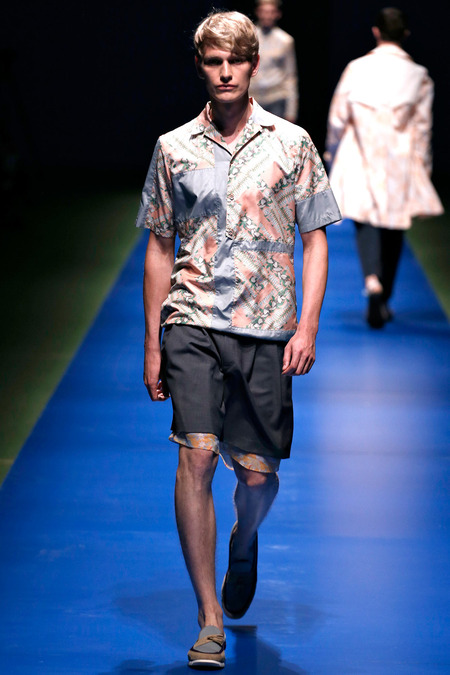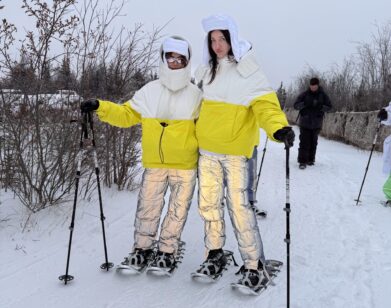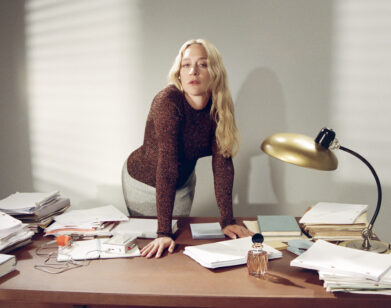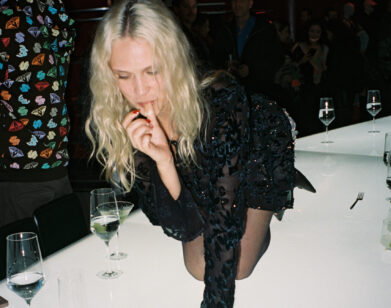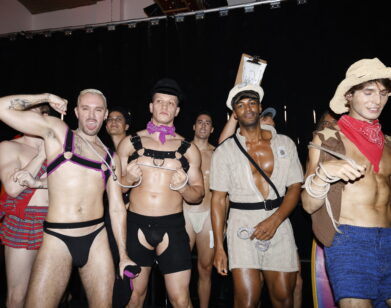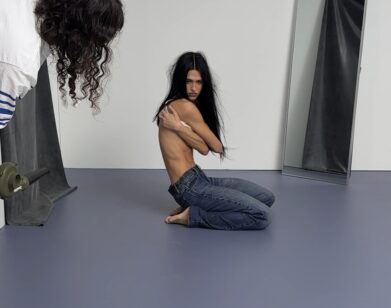Aloha from Kolor
“When I make something traditional, I’m bored. Then I add fantasy,” says Juniche Abe of Kolor. “What I really want is to find the right balance.” This season’s Pitti Uomo guest designer, Abe is usually of a “less is more” mindset when it comes to menswear, but he threw a curveball with the SS 2014 collection he presented at Florence’s Sferisterio delle Cascine, a 19th-century high-walled ball game court.
A faded snapshot of G.I. Joe on a surf vacation might include a Hawaiian print shirt featuring silky palm trees, but never beaded floral sandals. “I was worried they might be too feminine for men,” said Abe of the beaded footwear, “so I made them in plastic to bring out the sports element, then I put in a leather Caterpillar work boot sole.” Abe’s design finds an equilibrium between eccentricity and status quo. The fancy sandals worn with loose, pleat-front shorts (like a pair of cut-off suit trousers) and overshirts in colorful Hawaiian prints, is a look that’s both easy to wear and intriguing.
After Prada’s Milan SS14 show in Milan, Hawaiian prints seem to be the spring trend of choice. Kolor’s tropical patterns, however, spring from one of Abe’s childhood memories. “I don’t usually like prints,” he says, “but I was searching for happiness this season, and I recalled the first vacation I took with my parents to Hawaii.” In Abe’s hands, the lush, natural patterns are redistributed in geometric formations, spliced into shirts, inset into waistbands, banded along hems of jackets and trousers, or inserted as an extra layer peeking out from under shorts for a “messy” look.
At 48, Abe is a “new” name with years of experience. He headed to Yohji Yamamoto right after school, worked as women’s patter-maker at Comme des Garçons, and finally, joined Junya Watanabe’s small, hand-picked team for that label’s first five years.
Abe grew up surrounded by pattern and color. His father’s Kimono shop—started by his grandfather and in the family for the past 70 years—was where he first poured over the traditional color book of kimono swatches. It is an initiation into fabrics that remains at the heart of his design; as is the color book his father gave him when he set off to study apparel design at Tokyo’s prestigious Bunka Fashion College.
Since establishing a Kolor showroom in Paris in 2007, Abe’s label has gained a following of style cognoscenti who appreciate his subtly quirky detailing and innovative fabrics in classic shapes. A flagship store in Tokyo’s Minamiaoyama and a women’s showroom in Paris arrived in 2009. Stateside, Kolor sells to Maxfield and Ron Herman in L.A. and New York’s If.
Abe is piloting the new generation of Japanese brands poised to take its style all over the world. In a tricky twist of fate, another key name to watch from Japan is Sacaï, the young men’s and women’s brand launched and designed by his wife, Shitose Abe. Like her husband, Shitose honed her skills at Comme des Garçons and shows in Paris.
The discrete designer is reluctant to talk about his personal life, but asked what it’s like at home (where the couple has a 14-year-old daughter), he says the one thing he and Shitose rarely talk about today is fashion.
Pitti in Florence is a big stage for menswear, but one that Abe fills sans problème. The effortless clothes in this collection, which appear so “simple” at first glance, are fact packed with details: wrinkles built into the fabrics through special weaving and washing techniques make some of Kolor’s tailored jackets look like softly rumpled paper.
This search for a perfectly imperfect humanity at Kolor includes sweaters in a chorus of mismatched stripes, soft jackets tucked into shorts, and hems and waistbands trimmed with velveteen as though they’ve been hard worn and needed sprucing up. “Reality is very important to me,” says Abe. ” When I design I’m always asking myself: ‘Will men really wear these clothes?'”

